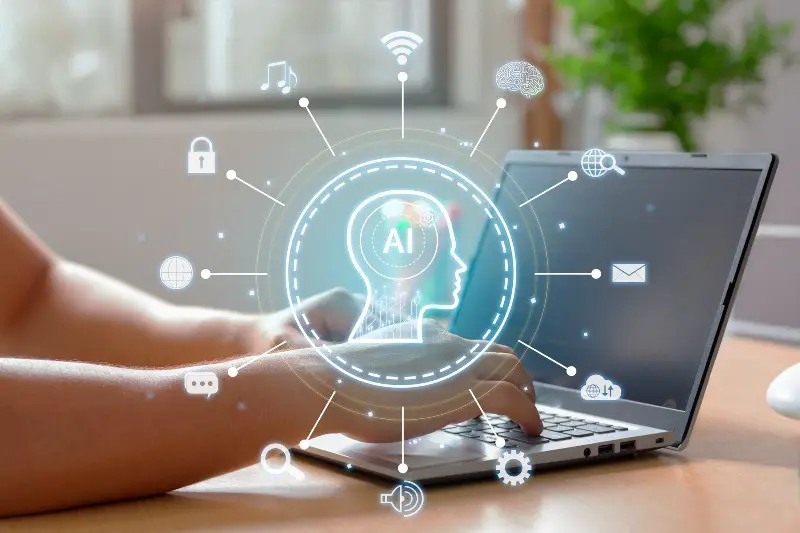Black Box AI might sound like something straight out of a science fiction movie, but it’s actually a big deal in the world of technology today. Think of it as a super-smart computer program that can make decisions and solve problems, but often, not even the smartest tech whizzes can fully explain how it does it. That’s what makes Black Box AI both amazing and a bit mysterious.
In this blog post, we’re going to explore Black Box AI and its impact on various fields such as finance, the work life of business professionals, the fascinating world of computer vision, and the legal aspects of using such advanced technology. Our goal is to shed some light on this complex topic in a way that’s easy to understand, even if you’re just learning about it. So, let’s dive into the world of Black Box AI and discover what makes it tick!
Finance
In the world of finance, Black Box AI is like a secret weapon. It’s used to analyze mountains of data to predict things like which stocks will go up or down, or who should get a loan. This is super helpful for banks and investment companies because it helps them make better decisions quickly. Imagine having a crystal ball that can help predict the future of the stock market – that’s sort of what Black Box AI does in finance!
However, there’s a downside. Sometimes Black Box AI makes decisions that are hard for even the experts to understand. This can be a problem, especially when someone’s loan application is rejected and they can’t find out why. It’s important for financial companies to use Black Box AI responsibly and make sure they can explain how these decisions are made.
Business Professionals
For business professionals, Black Box AI is like having a super-efficient assistant. It can help them make better decisions by providing insights that would be impossible to gather manually. For instance, Black Box AI can analyze market trends, customer behavior, and even predict future business opportunities. It’s an invaluable tool for those looking to stay ahead in the competitive world of business.
Yet, the challenge for business professionals is understanding the logic behind the AI’s decisions. Since Black Box AI doesn’t always show its work, it can be tough for these professionals to fully trust or explain the AI’s recommendations. This is especially important when making big business decisions that could affect the company’s future.
Computer Vision
Computer vision is one of the most exciting areas where Black Box AI is used. It’s all about giving computers the ability to ‘see’ and understand images and videos, just like humans do. This technology is used in everything from security cameras that can identify suspicious activity to medical imaging that helps doctors diagnose diseases.
What’s really cool about computer vision is how it’s constantly learning and improving. Black Box AI can analyze thousands of images, learn patterns, and get better at understanding what it’s seeing over time. However, this also means that sometimes we don’t fully understand how it’s making its decisions, which can be a bit of a puzzle for the experts.
Myths vs. Facts about Black Box AI
Myth 1: Black Box AI is Always Unpredictable
Fact: While it’s true that Black Box AI can be complex, it’s not always unpredictable. Many times, its decisions are based on vast amounts of data and sophisticated algorithms, which can be reliable in certain contexts.
Myth 2: Black Box AI is Too Complex to be Useful
Fact: Despite its complexity, Black Box AI is incredibly useful. It can process and analyze more data than humans ever could, leading to valuable insights in various fields like healthcare, finance, and security.
Myth 3: Black Box AI Can Make Decisions Just Like Humans
Fact: Black Box AI doesn’t make decisions in the same way humans do. It doesn’t have emotions or personal biases. Instead, it makes decisions based on data and predefined algorithms, which can sometimes lead to results that are hard for humans to understand.
FAQ Section
Q1: What is Black Box AI?
Black Box AI is a kind of AI where the decision-making process is not easily understandable to humans. Imagine a robot that can solve a complex math problem but can’t explain how it got the answer. That’s how Black Box AI works – it’s smart, but its thought process is a bit of a mystery.
Q2: Why is Black Box AI important in finance?
Black Box AI is important in finance because it can quickly analyze vast amounts of financial data to make predictions or decisions. This helps companies in making more informed and efficient financial decisions, like where to invest or whom to give a loan.
Q3: How do business professionals use Black Box AI?
Business professionals use Black Box AI to gain insights that can help them make better business decisions. It can analyze market trends, customer preferences, and other business-related data to provide valuable recommendations.
Q4: What is computer vision in Black Box AI?
Computer vision in Black Box AI refers to the ability of computers to interpret and understand visual information from the world, such as images and videos, using AI. It’s like giving computers the power to see and analyze visual data just like humans.
Q5: What are the legal concerns with Black Box AI?
The main legal concerns with Black Box AI revolve around accountability and transparency. If something goes wrong, it can be difficult to understand why or how the decision was made. This raises questions about who is responsible, especially in critical areas like healthcare or law enforcement.
Google Snippets
Black Box AI
Black Box AI is a type of artificial intelligence where the internal decision-making process is not clear or visible. It’s used in various fields for its ability to analyze large data sets and make complex decisions.
AI in Business
AI in business refers to the use of artificial intelligence to enhance business processes, decision-making, and customer experiences. It includes applications like predictive analytics, customer service chatbots, and market trend analysis.
Computer Vision and AI
Computer Vision and AI involve using artificial intelligence to enable computers to interpret and understand visual data from the real world. This technology is used in areas like facial recognition, automated vehicle navigation, and medical image analysis.
Black Box AI Meaning from Three Different Sources
Technology Encyclopedia: Black Box AI is a form of AI where the reasoning behind decisions and actions is not transparent or easily understood. It’s like a complex machine that works effectively but keeps its operating principles hidden.
AI Research Journal: In the context of machine learning, Black Box AI refers to models where the algorithm’s decision-making process is opaque. The operations of these models are not easily traced or comprehended by humans, often due to their complexity.
Popular Science Magazine: Black Box AI is often used to describe AI systems that are highly effective in their tasks but offer little insight into their thought process, making it challenging for users to predict or understand their behavior.
Did You Know?
- The term “Black Box” in Black Box AI originally comes from aviation, where flight recorders (black boxes) store data that’s usually only accessed after a crash.
- Some Black Box AI systems can process more data in a single day than a human could in a lifetime, making them incredibly powerful for tasks like climate modeling or disease tracking.
- The growing field of “Explainable AI” (XAI) aims to make AI decisions more transparent and understandable, addressing one of the main challenges of Black Box AI.
In conclusion, Black Box AI is a fascinating and complex facet of modern technology, playing a critical role in areas like finance, business, and computer vision. While it offers immense potential for innovation and efficiency, it also brings challenges in terms of understanding and legality. As we continue to advance in the field of AI, balancing the power of Black Box AI with transparency and ethical considerations will be crucial. This ensures that we can harness the benefits of this technology while minimizing risks and maintaining public trust.
References
- Explainable AI that uses counterfactual paths generated by conditional permutations of features. This method is used to measure feature importance by identifying sequential permutations of features that significantly alter the model’s output. The paper discusses the evaluation strategy of comparing the feature importance scores computed by explainers with the model-intern Gini impurity scores generated by the random forest, which is considered as ground truth in the study.
- Thinkful offers insights on how to address the “black box” problem in AI through Explainable AI (XAI) and transparency models. They discuss techniques like Feature Importance Analysis, Local Interpretable Model-agnostic Explanations (LIME), SHapley Additive exPlanations (SHAP), Model Distillation, and Decision Rules, which are designed to make AI models more interpretable and transparent. This is especially important in applications where decisions can have far-reaching consequences, such as healthcare or finance







